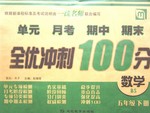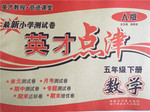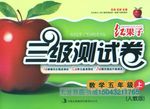题目内容
You may keep that pencil if you like. I’ve got plenty of________.A. ones B. the others C. others D. some others
答案:C
提示:
提示:
| pencil是可数名词。
|

练习册系列答案
 全优冲刺100分系列答案
全优冲刺100分系列答案 英才点津系列答案
英才点津系列答案 红果子三级测试卷系列答案
红果子三级测试卷系列答案
相关题目
下面文章中有5处需要添加小标题。请从以下选项( A、B、 C、D、E和F)中选出符合各段意思的小标题,并在答题纸上将相应选项的标号涂黑。选项中有一项是多余选项。
| A. Find a fiction book. B. Learn how to read your card. C. Find your non-fiction book. D. Decide if you want to search by author, title or subject. E. Learn to find the card you need. F. Understand the Dewey Decimal System. |
The card catalog was once found in every library. Most libraries have now replaced the card catalog with a computerized cataloging system. However, some libraries still have the set of drawers with thousands of cards inside, and some library patrons still prefer the hands-on approach to researching the information they need. Cards are set up alphabetically in long drawers. Different types of cards are kept separate from each other so you may search by author, title or subject. Learning to use the card catalog can help you find the book you want without waiting for a computer terminal.
Instructions:
1______
Once you have found the card for the book you want, write down the numbers and letters at the top of the card and the title and author of the book. The numbers at the top are how the book is cataloged using the Dewey Decimal System, and the letters are the first three letters of the author's last name. Your library will have the numbers at the end of the stacks (the shelves of books), so find the stack your book is located in, then scan the shelves of that stack until you locate the number on the card. More than one book can have the same number, so you will narrow down your search if you have the first three letters of the author's name.
2______
The cards in a card catalog reference other cards. An author card will also have a book title and subject, a title card will have the author and subject, and a subject card will have author and title. This is handy for cross-referencing, so if you want to read a book on beekeeping, you can look that up in the subject cards and find an individual card on each book the library carries on beekeeping.
3______
If you want to look up a book by Stephen King, find the author cards in your library's card catalog, and look under "K". The cards are organized by last name and are broken down into the individual drawers. Sometimes a letter will take up more than one drawer, so you may find drawers that have "Ka-Ke" and then "Ki-Kr." Stephen King will be in the drawer with "Ki-Kr." You would find a card in a similar manner by title or by subject by finding the drawer with the corresponding letters such as "Be" for beekeeping in the subject cards or "Wr" for "The Writer's Market" ("The" is not considered part of titles).
4______
This isn't required to use the card catalog, but it can make searching for your book a little easier. The numbers range from 000 to 999; 000-099 are general subjects, 100-199 are psychology and philosophy, 200-299 is religion, 300-399 is social science, 400-499 is language, 500-599 are natural science and math, 600-699 is applied sciences, 700-799 is art, 800-899 are literature and plays, and 900-999 are geography and history.
5______
The author card will have a call number at the top, a line with the author's name with last name first, then lines for the title of the book, its publisher, a brief summary and subject listings. For an author with many books like Stephen King, there will be a card for each of his books in alphabetical order. Title cards are similar but have the title first, then the author in the following line. Subject cards have the subject in all capital letters at the very top of the card and the same information as on an author's card. Many cards on the same subject will be organized by the authors' last names.
| 完形填空。 | ||||
| In 1977, a dead author of detective stories saved the life of a 19-month-old baby in a most unusual way. The author was Agatha Christie, one of the most successful writers of detective stories in the world. In June 1977, a baby girl became seriously ill in Qatar, near Saudi Arabia. Doctors were unable to 1 the cause of her illness, so she 2 to London and admitted to Hammersmith Hospital, where specialist help was 3 . She was then only half-conscious (半昏迷) and on the "Dangerously Ill" list. A team of doctors hurried to 4 the baby only to discover that they, 5 , were puzzled by the very unusual symptoms. While they were discussing the baby's case, a nurse asked to 6 to them. "Excuse me," said nurse Marsha Maitland, " 7 I think the baby is 8 from thallium poisoning." " 9 makes you think that?" Dr. Brown asked. "Thallium poisoning is extremely 10 ." "A few days ago, I was reading a novel called A Pale Horse 11 Agatha Christie," Nurse Maitland explained. "In the book, somebody uses thallium poison, and 12 the symptoms are 13 . They are exactly the same as the baby's." "You're very observant and you may be right," another doctor said. "We'll 14 some tests and find out 15 it's thallium or not." The 16 showed that the baby had 17 been poisoned by thallium, a rare metal used in making optical (光学 的) glass. 18 they knew the cause of illness, the doctors were able to give the correct treatment. The baby soon 19 and was sent back to Qatar. Inquiries (调查) showed that the poison 20 from an insecticide (杀虫剂) used in Qatar. | ||||
|